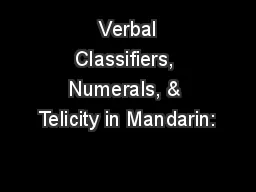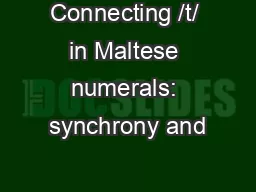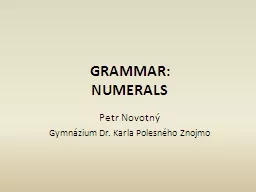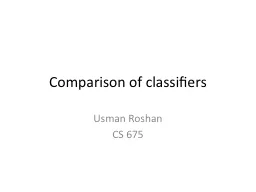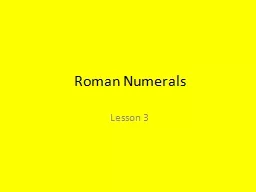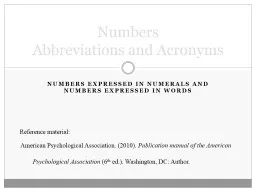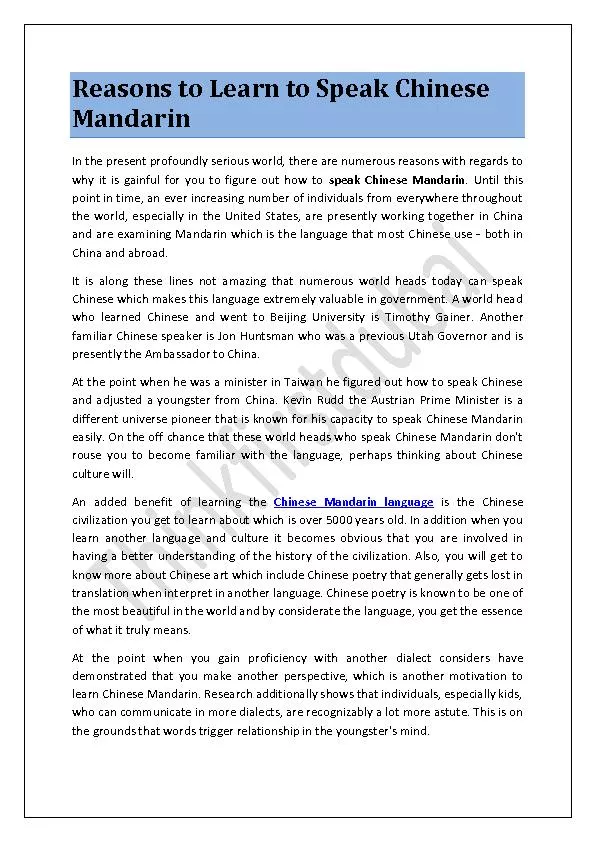PPT-Verbal Classifiers, Numerals, & Telicity in Mandarin:
Author : faustina-dinatale | Published Date : 2020-04-06
An ExoSkeletal Analysis PinHsi Chen Purdue University Indigenous and Endangered Languages Lab Main Questions What is the relation between verbal classifier numeral
Presentation Embed Code
Download Presentation
Download Presentation The PPT/PDF document " Verbal Classifiers, Numerals, & Tel..." is the property of its rightful owner. Permission is granted to download and print the materials on this website for personal, non-commercial use only, and to display it on your personal computer provided you do not modify the materials and that you retain all copyright notices contained in the materials. By downloading content from our website, you accept the terms of this agreement.
Verbal Classifiers, Numerals, & Telicity in Mandarin:: Transcript
Download Rules Of Document
" Verbal Classifiers, Numerals, & Telicity in Mandarin:"The content belongs to its owner. You may download and print it for personal use, without modification, and keep all copyright notices. By downloading, you agree to these terms.
Related Documents

